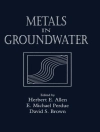This book is the perfect link for learning how to perform the experiments after only having studied theory. In eight chapters more than 50 essential NMR experiments are described in detail. Special focus is put on the organic set of NMR spectra (1H, 13C-APT, COSY, NOESY, HSQC and HMBC). Different chapters deal with advanced organic NMR, selective methods, heteronuclear NMR, relaxation and diffusion measurements, organic applications and maintenance. Every experiment has a section providing the reader with the purpose and scope of the specific experiment. Every experiment is concluded with the spectrum as it is obtained under the conditions described. Questions
and comments enable the reader to check their understanding. The authors are very experienced and the whole book is in full color, which enhances the reading experience and makes the spectra and other figures easier to understand.
This book is strongly recommended for all students and researchers who are involved in the structural elucidation of chemical compounds both in practical education and in pursuing research, in particular if they handle an NMR spectrometer.
Cuprins
Preface
Chapter 1 The Organic Set of NMR Spectra 1
1.1 The 1H NMR Experiment 3
1.2 Apt-13C NMR 7
1.3 COSY 11
1.4 NOESY 17
1.5 HSQC 23
1.6 HMBC 29
Chapter 2 Advanced Organic NMR Spectroscopy 35
2.1 2D J-Resolved 1H NMR Spectroscopy 37
2.2 ROESY 41
2.3 TOCSY 45
2.4 HSQC-TOCSY 49
2.5 HOESY 53
2.6 INADEQUATE 57
2.7 ADEQUATE 61
2.8 J-HMBC 65
2.9 Gated Decoupling 71
Chapter 3 Selective Methods 75
3.1 Water suppression by Presaturation 77
3.2 Solvent Suppression by 1D-NOESY 81
3.3 Water Suppression by SOGGY Excitation Sculpting 85
3.4 Solvent Suppression using WET 89
3.5 SELTOCSY 93
3.6 SELNOESY 97
3.7 SELINCOR 101
3.8 SELINQUATE 105
3.9 Band Selective HMBC 109
Chapter 4 Heteronuclear NMR 113
4.1 11B NMR Spectroscopy 119
4.2 15N NMR Spectroscopy 123
4.3 17O NMR Spectroscopy 127
4.4 19F NMR Spectroscopy 131
4.5 29Si NMR Spectroscopy 135
4.6 57Fe NMR Spectroscopy 139
4.7 195Pt NMR Spectroscopy 145
Chapter 5 Experiments in Physical Organic Chemistry 149
5.1 Measurement of the Spin–Lattice Relaxation Time T1 151
5.2 Measurement of the Spin–Spin Relaxation Time T2 155
5.3 Dynamic 1H NMR Spectroscopy 159
5.4 Diffusion Measurement with DOSY 163
5.5 Residual Dipolar Couplings (RDC) 167
Chapter 6 Organic Chemistry Applications 173
6.1 ASIS 175
6.2 Chirality Determination 179
6.3 Advanced Mosher Method 183
6.4 Quantitative NMR and Relaxation Reagents 187
6.5 Determination of Association Constants Ka 193
6.6 STD NMR 199
6.7 A Kinetic Experiment 203
Chapter 7 An Excursion to the Solid State and to Structural Biology 209
7.1 The CP/MAS Experiment 211
7.2 High-Resolution Magic-Angle Spinning 215
7.3 HN-HSQC 219
7.4 HNCA 225
Chapter 8 Maintenance and Calibration 233
8.1 Calibration of Pulse Duration in the Transmitter Channel 235
8.2 Calibration of the Pulse Duration in the Indirect Channel 241
8.3 Shaped Pulses 247
8.4 Adiabatic pulses 253
8.5 Temperature Calibration in NMR 257
8.6 Calibration of Pulsed Field Gradients 265
Appendix
Answers 273
Pulse Programs 295
Elementary Product Operator Formalism Rules 296
Chemical Shift and Spin-Coupling Data for Strychnine 298
Picture Credits 300
Index 301
Despre autor
Matthias Findeisen studied Physics at the University of Leipzig. During his Diploma course he joined 1979 the group of Prof. Artur Losche, who
established in the fifties radio frequency spectroscopy in the Physical Institute and was one of the pioneers in NMR in East Germany. This
gave M.F. a little taste of NMR and, had been nosey, he stayed there for his Ph D work on the field of liquid crystalline substances.
Afterwards he switched to the East German Academy of Science in Leipzig and operated an NMR routine lab, which focused him to NMR
in liquids and chemical analytical problems. Returning back to the Leipzig University in 1992 he kept this focus in the group of Prof. R.
Borsdorf, later on conducted by Stefan Berger, than concentrating to methodological NMR subjects.
Stefan Berger was intrigued by NMR after having won a bottle of beer during an introductory course in organic NMR led by Prof. H. Suhr at
the University Tubingen in 1968. After a Ph D thesis with Prof. Anton Rieker, in 1973 he joined Prof. J. D. Roberts at Caltec for postdoctoral
work, where he also met Prof. D. M. Grant and Prof. D. Seebach, who were then guest professors in Pasadena. This period was decisive in
trying for a Habilitation in NMR spectroscopy, which was achieved at the University Marburg. At the University of Leipzig he tries to combine
methodological development of NMR with its application to bioorganic problems.












